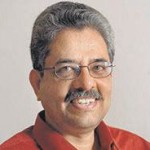Excessive bravery, like genius, comes with a touch of madness
Brian Close who passed away on Sunday was, by common consent in England, the bravest man to have played cricket.
As a batsman, Close stepped out to the West Indies fast bowlers Wes Hall and Charlie Griffith, taking blows to the body. As a fielder at short leg he was renowned for getting hit. His bare upper body was the staple of photographs on sports pages — complete with deep impressions of the cricket ball. In colour pages, you could tell the black from the blue! A well-known comedian said it was always possible to know when the cricket season began in England: “by the sound of leather hitting Close.”
Every country has its tales of the bravest — or the most foolhardy. Players, who, with scant regard for personal safety simply got on with the game. Many have become legends for a single act of bravery — Rick McCosker batting with a bandaged jaw, Colin Cowdrey stepping out to bat with his arm in a sling, Hanif Mohammed making a triple century even as the skin under his eyes kept peeling off.
Iron man of Indian cricket
Indian cricket’s bravest have always been measured against their first Test captain, C.K. Nayudu. On his final tour of England, aged 41, he was struck on the under the heart by fast bowler Gubby Allen. It was just the incentive he needed to make his highest Test score, 81.
Hit on the mouth by Dattu Phadkar in a Ranji Trophy match, Nayudu waved away assistance, swept away his teeth from the pitch, and when served up a full toss next ball, berated the bowler for this. He was in his 50s then. Chandu Borde has written about how “even at the age of 58, Nayudu was the iron man of Indian cricket.”
Nayudu played his last first class match in 1963-64. By then, Tiger Pataudi was India captain. Tiger was, perhaps, the bravest man to play for India. The mere thought of taking the field with just one good eye against bowlers around the world is mind boggling. For some years between the reigns of Nayudu and Tiger, India had earned a reputation for being soft. There were even stories of players pulling out of difficult tours.
With the arrival — and success — of Tiger Pataudi, things began to change. Apart from injecting his players with self-respect, Tiger also toughened them. He hasn’t been given enough credit for this. After all, it would have been ridiculous to whine to a captain who had such a serious handicap.
Thus was born the next generation of Indian ‘braves’ — Abid Ali, Eknath Solkar, Mohinder Amarnath, Sunil Gavaskar. Abid and Solkar at short leg picked up catches off genuine sweeps by batsmen that they ought to have been ducking from.
Amarnath’s heroics against the fast bowlers in Pakistan and the West Indies make up one of the inspiring chapters of Indian batting. For a brief period he was the best in the world. For barely getting hit as an opener in a career spanning 125 Tests, Gavaskar was special. A combination of technique and heart made up his game.
During a tour, we once calculated the number of days in a year when big, strong men with a cricket ball in their hands were attempting to incapacitate him. Sometimes bravery is calculated by what you don’t do. Close ensured he got hit; Gavaskar ensured he didn’t. That was perhaps even more admirable.
Kumble’s valour
In recent years, thanks to better equipment, better protection and better pitches, batsmen and fielders have felt safer. The single bravest act on a cricket field by an Indian remains, however, Anil Kumble bowling with a broken jaw in the Antigua Test of 2002. Kumble, hit by Merv Dillon while batting, sent down 14 consecutive overs and became the first bowler to dismiss Brian Lara while bowling with his jaw strapped up. He was due to fly back to Bangalore the following day for surgery, and said, “At least I can now go home with the thought that I tried my best.”
“It was one of the bravest things I’ve seen on the field of play,” said Viv Richards later.
An Abid Ali refusing to flinch, even charging out to the fast bowlers. A Solkar keeping his eyes on the ball, placing the taking of a catch above self-preservation. A Nayudu acknowledging a fast bowler’s dental skill. All part of legend now.
Close was a brave player. He was also, as Vic Marks has pointed out in a tribute, “a wee bit mad.” Perhaps, like genius, excessive bravery comes with a touch of madness.
by Suresh Menon

source: http://www.thehindu.com / The Hindu / Home> Sport> Cricket / by Suresh Menon / September 16th, 2015








